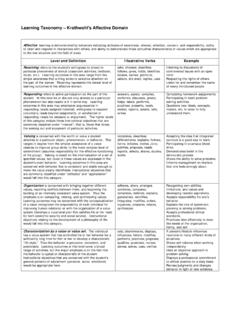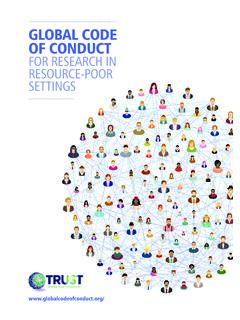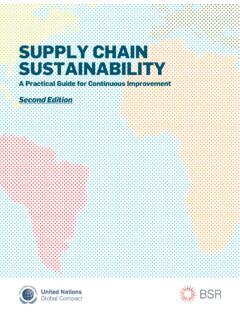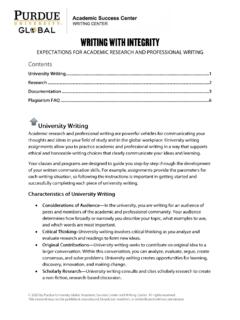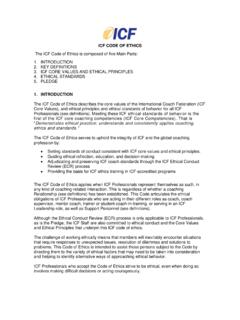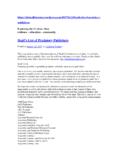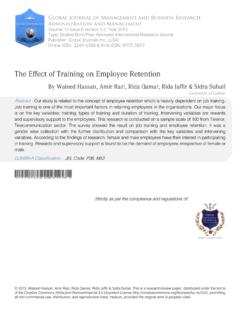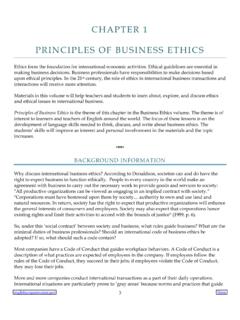Transcription of GRADE 7 - Center for the Study of Global Change
1 Internationalizing the Academic Standards: Indiana Social Studies | Grades 6-12 Page 1 Copyright 2011 by Indiana University SOCIAL STUDIES GRADE 7 GRADE : 7 Academic Standard: Academic Standard Indicator: Core Standard: Yes Standard Description (Academic or Indicator): Early Civilizations, States and Empires: 3500 to 650 : Identify and compare the rise of early agricultural river valley civilizations in Africa and Asia. Suggestion for Integrating International Content: Have students develop a hypothetical student code of conduct based on the Code of Hammurabi principle an eye for an eye. Discuss the pros and cons of such a code. GRADE : 7 Academic Standard: Academic Standard Indicator: Core Standard: Yes Standard Description (Academic or Indicator): Early Civilizations, States and Empires: 3500 to 650 : Describe the achievements of ancient Egypt in art, architecture, religion, and government and the development of the concept of theocracy.
2 (Individuals, Society and Culture) Suggestion for Integrating International Content: Have students create posters that illustrate the major steps in the construction of a pyramid, the making of papyrus, or mummification. Suggested resource: . GRADE : 7 Academic Standard: Academic Standard Indicator: Core Standard: Yes Standard Description (Academic or Indicator): Early Civilizations, States and Empires: 3500 to 650 : Describe the achievements of ancient Egypt in art, architecture, religion, and government and the development of the concept of theocracy. Suggestion for Integrating International Content: Have students identify and explain the ancient Egyptian symbols found on the back of a dollar bill. GRADE : 7 Academic Standard: Academic Standard Indicator: Core Standard: Yes Standard Description (Academic or Indicator): Early Civilizations, States and Empires: 3500 to 650 : Trace steps in the development of written language, including the evolution of Sumerian cuneiform, Egyptian hieroglyphics, and Chinese calligraphy.
3 (Individuals, Society and Culture) Suggestion for Integrating International Content: Have students write a sentence using the symbols and pictograms from Sumerian cuneiform, Egyptian hieroglyphics, Chinese calligraphy, and the Phoenician alphabet. Discuss what these symbols reveal about each culture. GRADE : 7 Academic Standard: Academic Standard Indicator: Core Standard: Yes Standard Description (Academic or Indicator): The Spread of Cultural, Economic, Social and Political Ideas: 500 ( ) 1600 ( ): Describe the historical origins, central beliefs, and spread of major religions. (Individuals, Society and Culture) Suggestion for Integrating International Content: Have students create a comparison table for the major world religions with various column heaadings.
4 Examples: Founder; Religious Text; Name Given to Believers; Place of Worship; View of the Afterlife. Internationalizing the Academic Standards: Indiana Social Studies | Grades 6-12 Page 2 Copyright 2011 by Indiana University GRADE : 7 Academic Standard: Academic Standard Indicator: Core Standard: Yes Standard Description (Academic or Indicator): The Spread of Cultural, Economic, Social and Political Ideas: 500 ( ) 1600 ( ): Describe the historical origins, central beliefs, and spread of major religions. (Individuals, Society and Culture) Suggestion for Integrating International Content: Have students identify the nations with flags containing Islamic symbols. Examples: The crescent moon and five pointed star symbols.
5 GRADE : 7 Academic Standard: Academic Standard Indicator: Core Standard: Yes Standard Description (Academic or Indicator): The Spread of Cultural, Economic, Social and Political Ideas: 500 ( ) 1600 ( ): Explain the importance of early trade routes in the eastern Mediterranean, South Asia, and China, including the early Silk Road. Suggestion for Integrating International Content: Have students simulate the exchange of goods on the Silk Road that connected the Mediterranean basin with China. GRADE : 7 Academic Standard: Academic Standard Indicator: Core Standard: Yes Standard Description (Academic or Indicator): Exploration, Conquest and Post-Colonial States: 1500 to the Present: Explain the reasons for European colonization of Africa, Asia, and the Southwest Pacific.
6 Suggestion for Integrating International Content: Have students color code a map of Asia or Africa, indicating which nations were colonized, when they were colonized, and by what European country. In parenthesis, indicate date of independence. _____ GRADE : 7 Academic Standard: Academic Standard Indicator: Core Standard: Yes Standard Description (Academic or Indicator): Exploration, Conquest and Post-Colonial States: 1500 to the Present: Describe and compare the responses of the indigenous people of India, South Africa and China to European imperialism. (Individuals, Society and Culture) Suggestion for Integrating International Content: Have students create maps illustrating how the European powers divided and colonized countries in Africa and Asia.
7 Have them consider if this could happen again and discuss why or why not. GRADE : 7 Academic Standard: Academic Standard Indicator: Core Standard: Yes Standard Description (Academic or Indicator): Exploration, Conquest and Post-Colonial States: 1500 to the Present: Describe and compare the responses of the indigenous people of India, South Africa and China to European imperialism. (Individuals, Society and Culture) Suggestion for Integrating International Content: Using the movie Ghandi and related primary sources, have students write an essay describing the negative effects of British imperialism on India. GRADE : 7 Academic Standard: Academic Standard Indicator: Core Standard: No Standard Description (Academic or Indicator): Chronological Thinking, HistoricalComprehension, Analysis and Internationalizing the Academic Standards: Indiana Social Studies | Grades 6-12 Page 3 Copyright 2011 by Indiana University Interpretation, research : Compare perspectives of history in Africa, Asia, and the Southwest Pacific using fictional and nonfictional accounts.
8 Suggestion for Integrating International Content: Use the Socratic Method or another discussion form to help students understand why it is important for officials and business people to be respectful of various cultural norms when negotiating deals and contracts internationally. GRADE : 7 Academic Standard: Academic Standard Indicator: Core Standard: Yes Standard Description (Academic or Indicator): Foundations of Government: Identify and compare historical and contemporary governments in Japan, North Korea, India, South Africa, and China. Suggestion for Integrating International Content: Have students create maps in which they color code the various types governments in the eastern hemisphere, ranging from most autocratic to most democratic.
9 Have them use almanacs in their reseearch. GRADE : 7 Academic Standard: Academic Standard Indicator: Core Standard: Yes Standard Description (Academic or Indicator): Roles of Citizens: Define and compare citizenship and the citizen s role in selected countries of Africa, Asia and the Southwest Pacific. Suggestion for Integrating International Content: Have students create a Citizen's Role Analysis Table for the nations of Australia, China, Egypt, Japan, and South Africa with various column headings. Examples: Nations; Suffrage Requirements; Voting Methods; Voluntary Organizations. Suggested resource: GRADE : 7 Academic Standard: Academic Standard Indicator: -- Core Standard: No Standard Description (Academic or Indicator): Students will explain how atmospheric and oceanic systems affect the seasons and climate.
10 They will understand and use technology and grid systems to identify and locate places geographically. They will identify and categorize the major geographic characteristics and regions of Africa, Asia, and the Southwest Pacific. They will also name and locate major physical features, countries, and major cities and will use geographic skills and technology to examine geographic relationships within and between these regions and the rest of the world. Suggestion for Integrating International Content: Have students create a line graph comparing the land area of five African or Asian nations. Suggested resource: GRADE : 7 Academic Standard: Academic Standard Indicator: Core Standard: Yes Standard Description (Academic or Indicator): The World in Spatial Terms: Identify and locate on maps the countries of Africa, Asia, and the Southwest Pacific.

